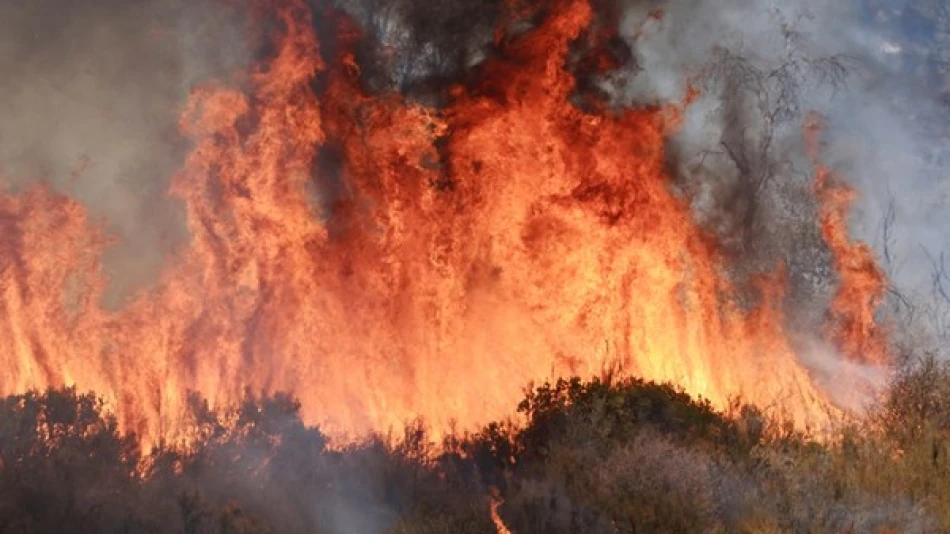
Unprecedented Wildfires Ravage California's Forests: Battling Blazes and Protecting Communities
California's Largest Wildfire of 2024 Tests Firefighters Against Soaring Temperatures and Rugged Terrain
The Gifford Fire in central California has become the state's largest wildfire this year, threatening over 870 homes and structures while injuring four people. As firefighters made gradual progress containing the blaze, rising temperatures reaching 95°F (35°C) Wednesday presented fresh challenges, with conditions expected to worsen as thermometers climb above 100°F (38°C) Thursday.
Critical 48 Hours Ahead for Fire Suppression Efforts
Captain Scott Sevtschak of the Santa Barbara County Fire Department warned that crews operating in steep, rugged terrain along the northern edge of Los Padres National Forest face increasingly hostile conditions. "The weather is hot and relative humidity is low, so we expect intense fire behavior," Sevtschak stated, though he noted that relatively calm winds provide some tactical advantage.
The fire's expansion slowed overnight after days of uncontrolled growth, suggesting containment strategies may be gaining traction. However, the temperature spike threatens to reverse this progress by creating ideal conditions for rapid fire spread and increased intensity.
California's Worsening Fire Season Pattern
Earlier and More Intense Blazes
The Gifford Fire's emergence as 2024's largest wildfire this early in the season reflects California's evolving fire landscape. Historically, the state's most destructive fires occurred during fall months when hot, dry Santa Ana winds combined with accumulated dry vegetation. Now, significant fires are starting earlier and burning more intensely due to prolonged drought conditions and higher baseline temperatures.
Infrastructure and Community Impact
The threat to nearly 900 structures highlights California's ongoing wildland-urban interface crisis, where residential development increasingly encroaches on fire-prone wildlands. Los Padres National Forest, spanning over 1.75 million acres across central California, has experienced multiple large fires in recent years, straining both federal and local firefighting resources.
Economic and Resource Allocation Implications
Large-scale firefighting operations like the Gifford Fire response typically cost millions of dollars per day, involving hundreds of personnel, aircraft, and specialized equipment. California's annual firefighting budget has grown substantially, reaching $3.7 billion in recent years as fire seasons extend longer and burn more intensively.
The early emergence of such a significant fire suggests 2024 could become another expensive year for fire suppression, potentially impacting state budget allocations and federal disaster relief funding. Insurance companies closely monitor these developments, as large fires often trigger premium increases and coverage restrictions in high-risk areas.
Weather as the Decisive Factor
The next 72 hours will likely determine whether firefighters can establish meaningful containment lines before conditions deteriorate further. While calm winds provide tactical advantages for aerial operations and ground crew safety, the combination of high temperatures and low humidity creates optimal conditions for fire growth.
California's fire agencies have invested heavily in weather monitoring and predictive modeling since devastating fires like the 2018 Camp Fire and 2020's record-breaking fire season. These tools help commanders position resources strategically, but ultimately cannot overcome the fundamental challenge of extreme weather conditions in drought-stressed landscapes.
 Layla Al Mansoori
Layla Al Mansoori







